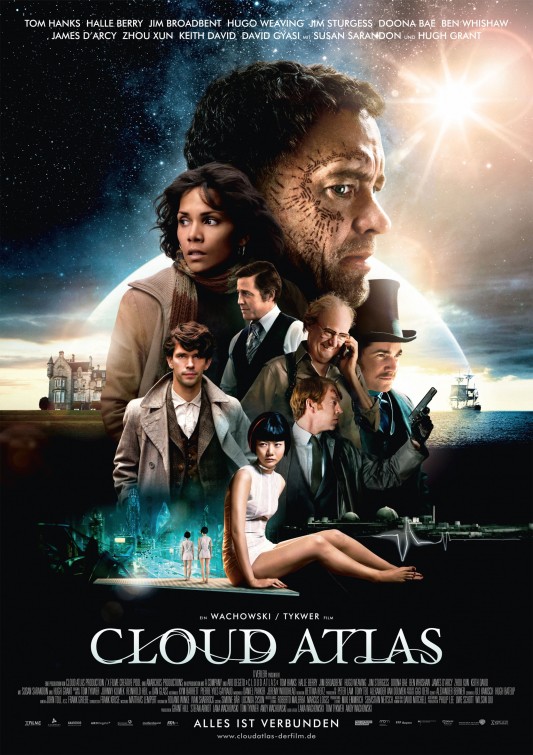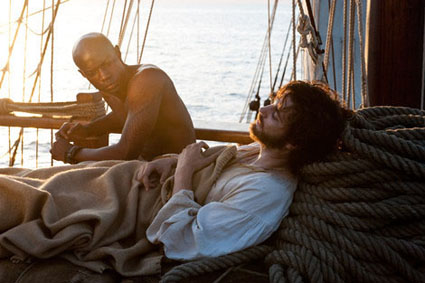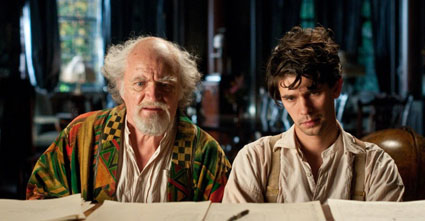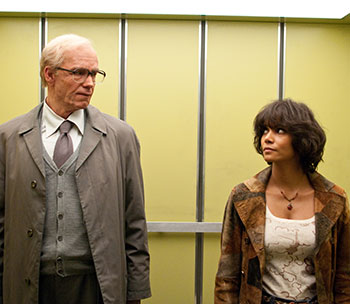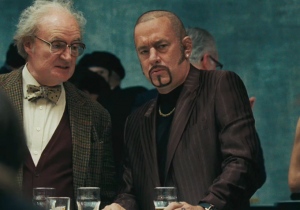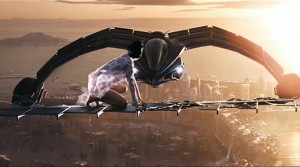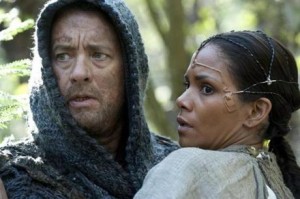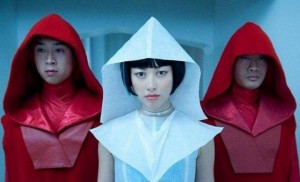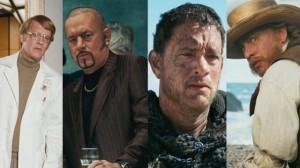Movie Review: Cloud Atlas
by Crazy, filed in Movies, Reviews on Nov.08, 2012
I had seen a trailer for Cloud Atlas not very long ago. I didn’t really understand it, but it piqued my curiosity. There appeared to be some elements of science fiction and adventure involved that appealed to me. From what I had heard it was based on a novel that was supposed to be unfilmable. Several days after experiencing the movie, I am still thinking about it. And I say ‘experience’ because one does not simply watch this movie, you become involved in it. If you like Cloud Atlas, despite its 172 minute run-time, it is unlikely that you will be satisfied with a single viewing.
Cloud Atlas is, in fact, six separate stories set in different eras, but all told in parallel. Initially, the jumping back and forth between six different plots is confusing and disorienting, but as things progress, it becomes increasingly easy to follow since we are not bogged down by any unnecessary elements in the plots. These are fairly terse short stories weaved together with physical and thematic ties. While it is tempting to try and keep track of everything from the outset, don’t. Just sit back and enjoy the film, the pieces will come together as they are meant.
Read on for more details of the plots and my reactions.
The first story follows a young man by the name of Patrick Ewing on a sea voyage from Africa back to America. The setting is around the 1840’s during a boom in the slave trade. Ewing, while battling illess most of the journey, befriends a stowaway slave who begs Mr. Ewing for assistance.
The second story is set in the 1930’s where a young gay man convinces a renowned composer to take him under his wing.
A story set in the 1970’s follows an elderly scientist with an important secret and the reporter he briefly befriends as a mystery begins to unfold.
These three stories are tied together in various ways that will not be obvious in the beginning, but will be revealed as the stories progress. The second three stories follow a similar pattern. If there was a direct connection between the third and fourth story, I’m afraid I may have missed it.
The next three stories include the challenges of a publisher as he falls upon hard times in the present day, the story of a female replicant in Neo Seoul, grown for servitude in the year 2144, and finally a post-apocalyptic story of what appear to be the last few survivors of Earth. As with the first trio of stories, the second trio are interconnected in differing ways that will be revealed as the stories progress.
While the first and second trio of stories do not appear to have direct ties to one another, they share heavy thematic elements about oppression, self-realization, and our connected-ness to other people.
The story of the female replicant in Neo Seoul was probably the most interesting since it seemed to have a very heavy Blade Runner influenced setting and theme. The story of the current day publisher appeared to have a reference to a seventh story or it was possibly a reference to the second story that I could not tie together. This part seemed incomplete because it was so lightly touched upon. The failure of this reference was definitely my biggest complaint.
This movie featured a handful of actors that were in every story, playing different parts. They included Tom Hanks, Halle Berry, Hugo Weaving, Keith David, Hugh Grant, Susan Sarandon and a few other names that were not as recognizable to me. Thanks to some terrific makeup and special effects, its hard to discern who they played in different scenes. You will be gifted with a visual run down as the credits role at the end of the movie, though.
Overall, I really enjoyed this movie. I still find myself thinking about the different stories and how they connect to each other. It has made me sufficiently interested in checking out the book that all of this is based on.
I have also left this movie with a huge crush on Doona Bae. It is too bad this movie came out so close to Halloween. I think Somni 451 would have been a popular Halloween costume.


 PS3
PS3
 Famicom Dojo
Famicom Dojo KEEP PLAYING
KEEP PLAYING KEEP PLAYING: Rewind
KEEP PLAYING: Rewind Powet Toys
Powet Toys Powetcast
Powetcast Hitchhiker's Guide POWETcast
Hitchhiker's Guide POWETcast















